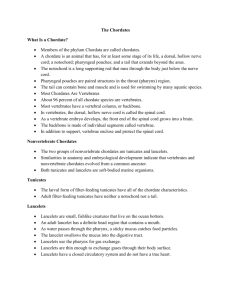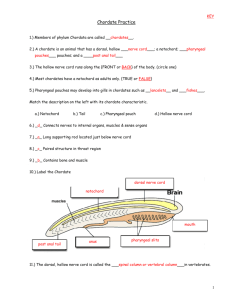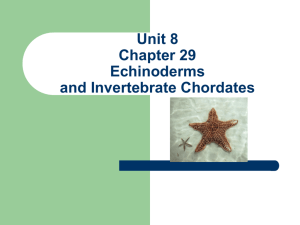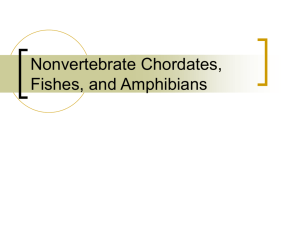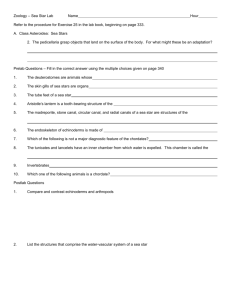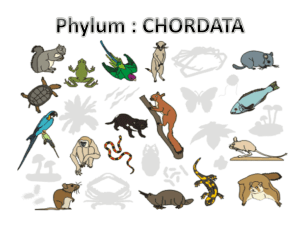Chordates - DoralBio8
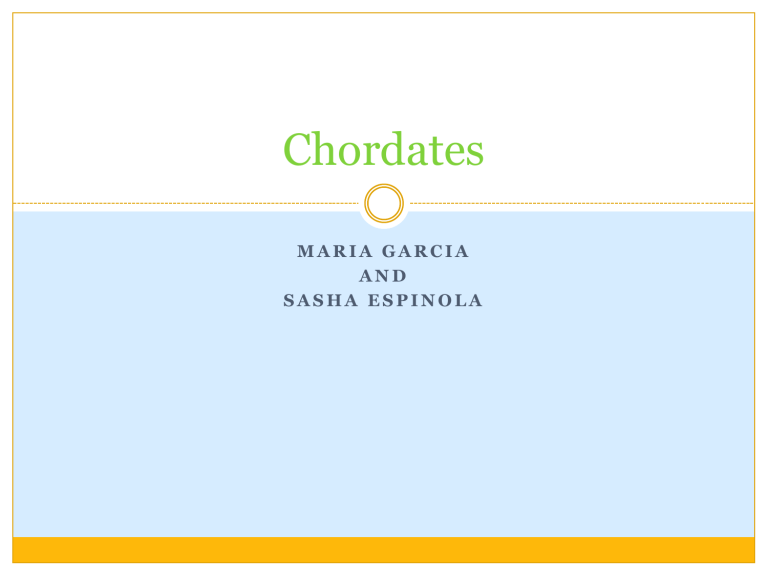
Chordates
M A R I A G A R C I A
A N D
S A S H A E S P I N O L A
Phylum Chordata
Classification of Chordates include characteristics such as:
Dorsal, hollow nerve cord
Notochord
Pharyngeal pouches
Tail that extends beyond the anus
Structure of Chordate
Notochord: Supporting rod that runs through the body just below the nerve cord.
Some chordates only have an notochord when they are embryos.
Pharyngeal Pouches: paired structures in the pharynx region of the throat.
Some chordate, like fishes and amphibians, slits connect to the outside of the body that develop gills
All chordates have a tail that extends beyond the anus it can contain bone and muscle and is used in swimming by many aquatic species
Vertebrates
More than 99% of all chordates are placed in the sub phylum vertebrata and they are called vertebrates
Has a supporting structure know as a vertebral column, or backbone
Dorsal hollow nerve cord is the spinal cord
As chordates develop the front end of the spinal chord grows into a brain, the backbone replaces the notochord, and is made of individual segments called vertebrae that protects the spinal chord.
Similarities and Differences of Anthropoids and
Chordates Vertebrates
Arthropods
Their exoskeleton needs to be shed periodically
Vertebrates
The skeleton grows as the animal grows
The skeleton is made up of non living material
Skelton contains living cells as well as living materials
Similarities
Endoskeleton protects and supports the animals body and gives muscles a place to attach
Nonvertebrate Chordates
Vertebrates and nonvertebrates evolved from a common ancestor because of the similarities in structure and embryological development
Fossil from the Cambrian period states that they divided more than 550 million years ago
Tunicates
Belong to the subphylum Urochordata, filter-feeders.
The larva form of a tunic has all the chordate characteristics, adult tunics on the other hand don’t have a notochord or a tail.
Lancelets
Belong to the subphylum
Cephalochordata.
They’re small fish-like creatures that live on the sandy ocean bottom.
Adult Lancelets has a defined head region that contains a mouth, it opens into a long pharynx with up to a
100 pairs of gill slits.
Lancelets cont.
Water passes through the pharynx and a sticky mucus catches the food particles. Then, the Lancelets swallows the mucus into the digestive track.
Lancelets use the gills in the pharynx for gas exchange, they’re so thin that they can exchange gases through their body surface.
Lancelets have a closed circulatory system, meaning their blood flows within, the walls of the blood vessels pump blood throughout the Lancelets tiny body.
Lancelets cont. part deux
The fish like motion of
Lancelets results from contracting muscles that are organized into vshaped units, they’re paired on either side of the body.
Often live with their bodies half buried into the sand.
They contain no fins of legs, this is why they have paired muscles along their body

